Life in the Modern Workplace
It's a buzz word. You can't go 5 minutes without hearing it, reading it, seeing it, somewhere. And it has many flavours: modern workplace, modern ways of working, agile working, remote working, flexible workplace, etc. The crux of it though? The "F-word": FLEXIBILITY.
Employers hear those buzz words and worry: what does flexible working MEAN? So many things, and in fact, not only will you find a lot of info out there about it, but it is at the core of what we do here at IComm. But mainly? The ability to work whenever, and wherever your team needs to, and have at their disposal all the tools they need for their work. Whether that is onsite with a client, in a different city at a satellite office, at home because they have a family emergency (or their commute is pure craziness), from a cafe because they are in between client visits, at their desk in your office, or in a meeting room managing a team. It truly is the best outcome of all this mobile technology that is being developed at breakneck speeds.
The modern workplace is a BOON to business, and it is an EXPECTATION of the newer generations of workers. Happier workforce, lower overhead costs, and higher productivity.
And on the flip side of that... Handsets are NOT flexible. Actually, it could be said that they are the antithesis of flexibility. Tied to a desk, big, clunky, voice only, with MAYBE some little integrations here and there.
With the lightning speed of technological advancements, and simple voice connectivity evolving to unified and intelligent communications, it makes sense to evaluate what your options are when it's time for a handset upgrade. Handsets have served you well, but moving forward, do you NEED to swap like for like? Why not use this need to upgrade your equipment as an opportunity to assess where you are at in regards to modern ways of working, and how you can future-proof your communications investment as much as possible?
Some interesting industry statistics:
- By 2020, 70% of workers globally will be working remotely *
- 82% of workers are more productive working from home
- 50-70% of companies buying UC Solutions choose to equip their workforce with headsets
- 62% of employees work from multiple locations each week
* Working remotely doesn't necessarily mean working from home. Many workers are able to work from cafés, customer sites, etc. Read more about State of Remote Work here on Buffer's site.
So based on these numbers, have you considered replacing some of your might-soon-be defunct handsets with headsets?
The Why Factors
Disruption
Let's face it. Answering the phone during your workday is disruptive. Studies have been done to highlight the importance of focus time, and importance of reducing the amount of times you shift between tasks. In most cases, workers have to stop doing what they were doing if the phone rings. Having a headset enables you to seamlessly answer a call, have a discussion, hang up, and without ever moving in your chair from what ever task you were working on.
Mobile? Ha!
You can't be mobile, or remote, or off-site, with a handset. Your handset is tied to a physical location. If 70% of global employees will be working remotely by 2020, with having only handsets, you are effectively eliminating 70% of your potential employee pool. Not a great figure if you want to ensure your organisation is employing the best people for your success.
Driving consumption, seamlessly
When companies invest in unified communications, the consumption of ALL aspects of the environment increase based on the amount of users outfitted with headsets either in addition to, or instead of, handsets. And that's simply because the use of the headset enables the user to be across all necessary platforms with one device. Video conferencing, audio conferencing, Skype calls, Teams meetings, all platforms are easy access with a headset. Handsets, not so much.
Happy workforce = higher productivity and efficiency = savings for your organisation
As employers, aren't we always striving to get more out of our employees? Studies have shown that the happier a workforce is, the higher their productivity and efficiency is. 2/3 of employees are allowed to, and 4/10 actually listen to music during their work day to boost productivity. When a team has higher productivity, they generally feel far higher job satisfaction, because we humans love being productive. Higher job satisfaction also results in lower employee turnover rates! At the end of the day, that will also translate to savings on your bottom line, because if your employees are sticking around longer, you are spending less money training individuals who aren't going to be long term employees.
Proof That Headsets Deserve A Second Look
Don't believe us?
Here are two quotes from happy organisations that were shocked at the successful adoption of headsets through their work forces.
We thought that users would prefer handsets over headsets when we went down the path of UC. Of 400 total users we banked on at least 10% choosing handsets. When we ran an awareness session and demonstrated the pros of a headsets versus handsets we ended up with only 4 handsets in total!
Laurie Meerwald
ICT Director, Development Victoria
Essentially if you are not giving users a comfortable, fit-for-purpose device, they will reject the phone system. We wanted to deploy devices to our employees that made them happy to use the technology. The rate of adoption rate is far more successful that way.
Mark Weedon
VP IT, CEVA Logistics
Common Concerns
We asked one of our clients, Berry Street, what common concerns they came across in the deployment of headsets to their large workforce spread across Victoria. Below are these concerns, and John Panetta, their IT Manager, shared with us how they responded in order to get the staff on board.
"I prefer a handset."
The organisation has invested heavily in UC. In saying that, in order for you (the user) to take full advantage of the flexibility that this solution was intended for, we are standing firm on our stance to roll out headsets to the entire organization. Unless you have any medical reasons for requiring a handset, than we have 3 headsets for you to choose from:
- 1 x cordless if you are in the following areas A, B, or C
- 1 x over-the-ear style
- 1 x dual stereo (if you want to block out back ground noise and/or want to listen to music)
"But... my hair?"
There are various styles of headsets that will minimize the chances of this becoming an issue, and we have no issues with individual users choosing the style of headset that they want/need.
"I am not a call centre agent."
Up to 70% of companies that deploy unified communications systems are opting for headsets. It will provide you with mobility and portability. It also lends to a much happier OH&S department. Many individuals struggle with holding a phone with their ear while "trying" to continue to multi-task - a headset allows you to truly multi-task, as both your hands are free. No more crook necks from cradling the handset!
"What if my PC is off and/or the power is out?"
There are multiple options in this situation.
- People can call you and leave a message in your voicemail.
- We can have you set up that your number simultaneously rings to your mobile app.
- You can also make calls from the mobile app, ensuring you are still making calls through your work number.
- You can alternatively set your system to forward all calls to your mobile number.
UC provides many options and is flexible based on how you (as an individual) want to manage the way you work.
Financial Department ~ Cost?
Whilst many would see this as a hygiene problem, in that each user MUST have their own device, we saw it as a bonus. We were able to purchase between 2-4 headsets to 1 handset, depending on the model chosen.
OH&S
As an organisation, we have a legal obligation to provide a healthy and safe workplace. In addition, effective management of health and safety hazards just makes good business sense. It can lead to reduced costs, increased productivity, higher morale, and better employee relations. Again, happy employees means a happy organisation, with happy clients.
Change... It's All A Bit Too Much!
Change is a bit scary, especially if you have a particularly large organisation. How are they going to cope? What if they mutiny??
This is by far and above the biggest reason why we at IComm have our OWN change management and tech adoption branch of the business, Halcyon Change Management. We've made it our business to understand the growing pains that our clients are experiencing when they make any shift, but especially in consideration of tech in the realm of unified communications, and how to surmount those considerable obstacles with the least resistance, and the best outcomes.
Next Steps
You have options. Change doesn't have to be scary. And we're here to listen if you just want to explore your options. So give us a call or send us an email, especially if:
- you think your users won't deal with a shift to headsets well
- you think you need to create a plan around considering modern ways of working
- you want to know what the options are for headsets AND handsets - one size does NOT fit all, and yes, some of your users might be better off with a handset! (And that's okay too!)
Call us at 1300 881 641 or send us an email at [email protected] for a no obligation discussion about your options.

 Back
Back
